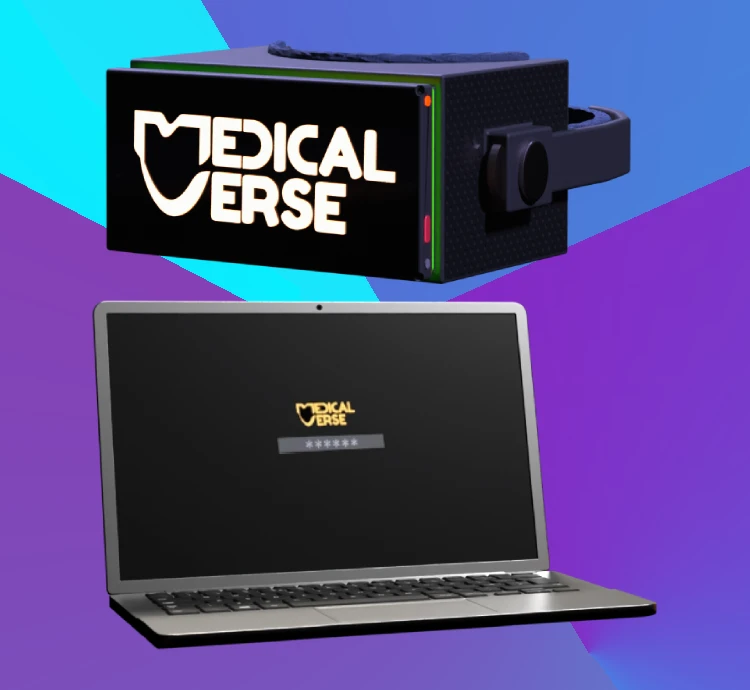
Cross-platform compatibility
Enabling Use On A Variety Of Devices, Including VR Headsets, Computers, And Mobile Devices
Virtual reality in nursing and medical simulations has become an important tool for improving the hands-on experience of nursing and medical students. With the recent advancements in technology, these simulations can now be made compatible with a variety of devices, including VR headsets, computers, and mobile devices.
Cross-platform compatibility in nursing and medical simulations allows learners to access simulations from a range of devices, making it easy to switch between devices or use the most appropriate one based on the available resources. For instance, nursing and medical students can use a VR headset for a more immersive experience, then switch to a computer or mobile device for more accessible, on-the-go learning.
The integration of cross-platform compatibility in nursing and medical simulations has many advantages. Firstly, it allows nursing and medical students to access simulations from their preferred devices, which enables them to make the most of the available resources. This versatility also allows for a range of learning modes, from group simulations to self-paced learning, to suit learners’ different schedules.
Moreover, the use of cross-platform compatible nursing and medical simulations eliminates the need for expensive hardware requirements. A student can access the simulations from any device without purchasing specific hardware. This accessibility allows for greater participation from students, even those who may not have the financial resources to purchase expensive equipment.
Furthermore, cross-platform compatibility allows nursing and medical students to collaborate more efficiently. With learners accessing the simulations from a range of devices, it is easier to organize group simulations with members in different locations. Additionally, learners can switch devices during group simulations according to their preferences, allowing for smooth transitions between learners and devices.
Another benefit of cross-platform compatibility in nursing and medical simulations is the ability to update content easily. Once updates are made, all learners can access the new content from whichever device they choose, ensuring that everyone is on the same page and up-to-date.
In conclusion, the integration of cross-platform compatibility in nursing and medical simulations has made access to simulated learning more convenient and accessible for students. By enabling the use of a variety of devices, learners can access the simulations from any location and with any device, allowing for greater flexibility and collaboration. The use of cross-platform compatible simulations also ensures that students have access to the latest content and software updates, making the learning process more efficient and up-to-date.
Cross-platform compatibility in nursing and medical simulations allows learners to access simulations from a range of devices, making it easy to switch between devices or use the most appropriate one based on the available resources. For instance, nursing and medical students can use a VR headset for a more immersive experience, then switch to a computer or mobile device for more accessible, on-the-go learning.
The integration of cross-platform compatibility in nursing and medical simulations has many advantages. Firstly, it allows nursing and medical students to access simulations from their preferred devices, which enables them to make the most of the available resources. This versatility also allows for a range of learning modes, from group simulations to self-paced learning, to suit learners’ different schedules.
Moreover, the use of cross-platform compatible nursing and medical simulations eliminates the need for expensive hardware requirements. A student can access the simulations from any device without purchasing specific hardware. This accessibility allows for greater participation from students, even those who may not have the financial resources to purchase expensive equipment.
Furthermore, cross-platform compatibility allows nursing and medical students to collaborate more efficiently. With learners accessing the simulations from a range of devices, it is easier to organize group simulations with members in different locations. Additionally, learners can switch devices during group simulations according to their preferences, allowing for smooth transitions between learners and devices.
Another benefit of cross-platform compatibility in nursing and medical simulations is the ability to update content easily. Once updates are made, all learners can access the new content from whichever device they choose, ensuring that everyone is on the same page and up-to-date.
In conclusion, the integration of cross-platform compatibility in nursing and medical simulations has made access to simulated learning more convenient and accessible for students. By enabling the use of a variety of devices, learners can access the simulations from any location and with any device, allowing for greater flexibility and collaboration. The use of cross-platform compatible simulations also ensures that students have access to the latest content and software updates, making the learning process more efficient and up-to-date.